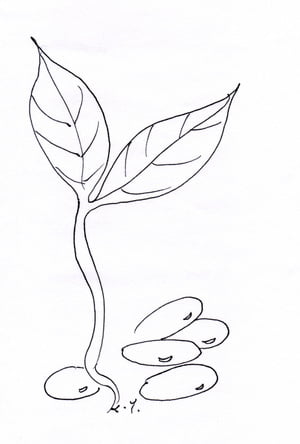The following information has been gathered and compiled over a period of years, through personal experience, while traveling, teaching classes that include T’ai Chi, Qi Gong, herbal information, martial arts and other health related subjects. The article also contains feedback from students and anecdotal information from readers of my columns. The following are my opinions and deductions from those sources.
Low levels of iron in the blood can cause the soles of the feet to burn. Other symptoms of low iron levels include: partial deafness, brittle nails, pale skin, night sweats, eye soreness, the feeling that you’re not getting enough air, asthma, weak rectal muscles, tired in the morning but feeling better at night, heart palpitations, cold feet, sore joints, ankle swelling, loss of bladder control, lack of concentration and difficulty remembering. Sounds a lot like old age doesn’t it. Maybe that’s why they call iron “The mineral of youth.”
In order to properly assimilate iron, or iron rich foods, it’s necessary to have adequate levels of hydrochloric acid. Antacids lower the hydrochloric acid levels. Indigestion is often a lack of sufficient stomach (hydrochloric) acid as opposed to too much. When food isn’t properly digested in the stomach it begins to putrefy and can cause acid reflux. It may be advisable to take a digestive enzyme if poor assimilation of any food is suspect. See my other articles for more information.
Improper shoe fit is a common cause of foot problems. Most people buy shoes according to heel to toe length and check by pushing down on the front of the shoe to see where the toes are. This is common procedure for the vast majority of shoe salesman. The correct way to check for proper shoe fit, is by checking the longitudinal arch length from heel to ball of the foot. See my foot article “Tired or Sore Feet” –“You Have Two Arches on Each Foot” for explanation of longitudinal and transverse arches.
If the joint of the large toe is too far forward in the shoe, the shoe won’t bend at the proper place, which causes the toes to curl and the arch is unsupported when the weight and pressure is placed on the foot during walking. The toes become crooked and crowded when the foot relaxes, when the weight and pressure are relived between steps and the arch straightens out. The shoe shouldn’t be tight, but your foot shouldn’t slide forward and back in the shoe when walking.
Find someone who has the same size foot you do and compare your feet. Chances are you’ll find you have longer or shorter toes, a greater or lesser distance from the heel to the ball of the foot. If you both wear the same shoe, someone is going to have foot problems, if they don’t already.
Bursitis, Achilles tendinitis, bunions, fallen arches, corns, calluses and circulation problems are only a few of the many problems that can be caused from something as simple as improper shoe fit.
I’ve spent a lot of time on foot, walking across Spain, over the Sierra Nevadas, the Cascades and probably thousands of miles running, fishing and trekking. Besides proper shoe fit, I’ve finally found an insole that’s made my days more enjoyable and my nights more restful, because my feet don’t hurt. Before my run across New Mexico, I was using two sets of insoles in each shoe in order to cushion the impact of running on rocky roads. I found some insoles on the internet at www.noene.com that took the pain out my training runs, and my run across the state. I wish I’d found them earlier. I use them in all my hiking boots, running shoes and casuals. It’s nice to have happy feet.



